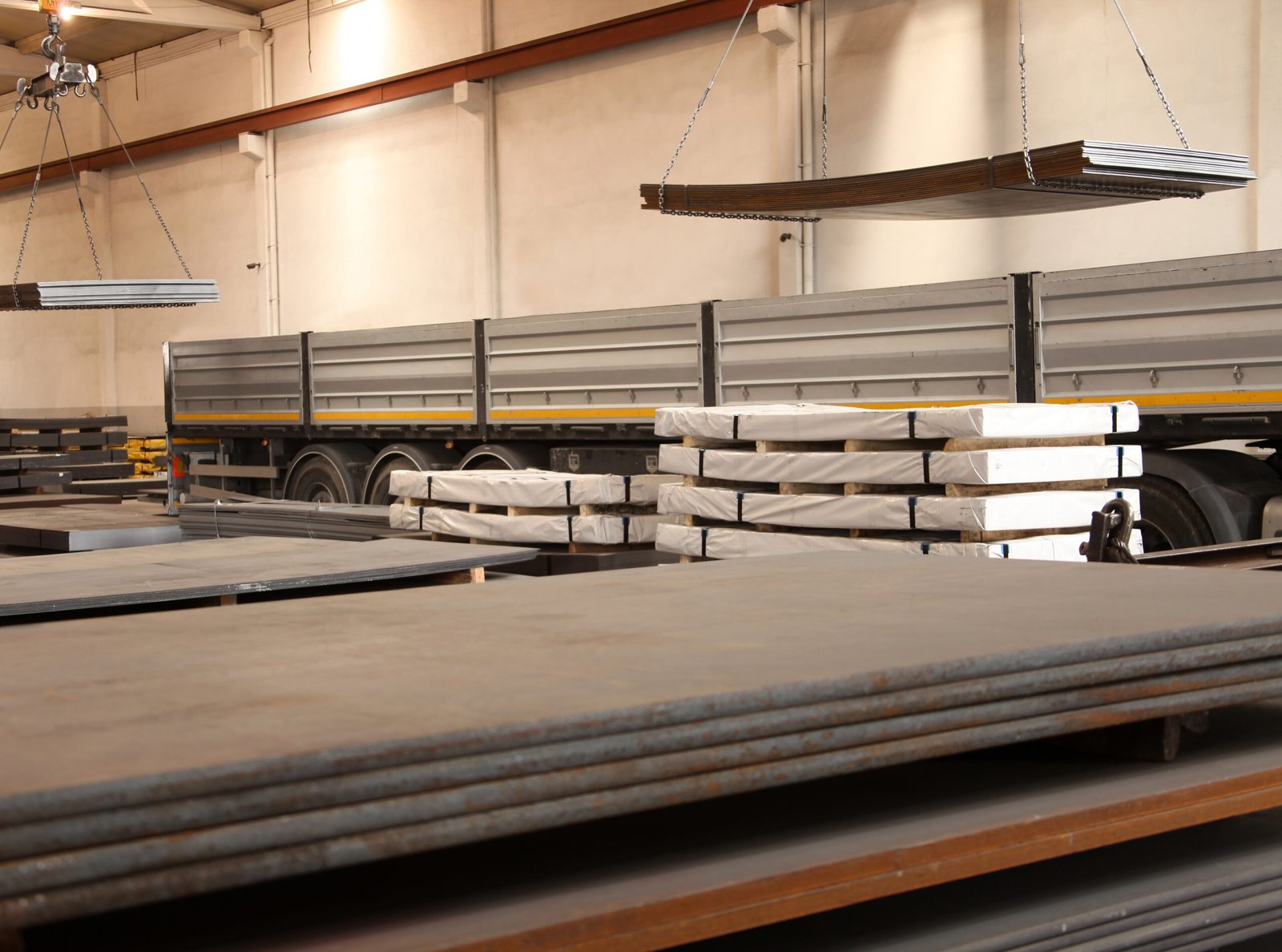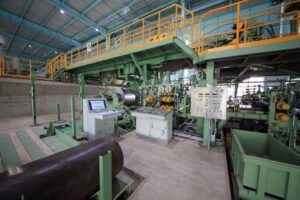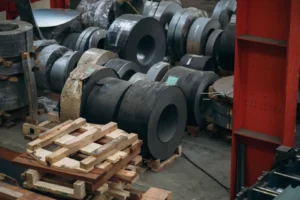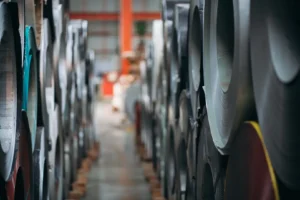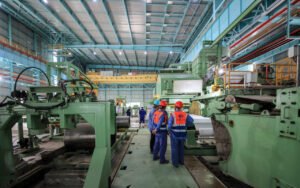Best Industrial Solvents for Cleaning Stainless Steel Equipment: A Cost & Safety Review
Choosing the right industrial solvent feels overwhelming. A wrong move can damage expensive equipment, risk worker safety, and inflate your maintenance budget. Let's clarify the best path forward.
The best industrial solvents for stainless steel effectively balance cleaning power, total cost of ownership, and safety. Key options include aqueous-based cleaners, isopropyl alcohol, and modern, low-toxicity bio-solvents. The ideal choice depends entirely on the type of contaminant, operational context, and regulatory requirements.

As the Global Business Director at MFY, I've seen firsthand how maintenance choices impact the entire supply chain. Selecting a solvent isn't just a janitorial task; it's a strategic decision that affects your equipment's longevity, your team's well-being, and your company's bottom line. In an industry driven by precision and efficiency, even the cleaning process must be optimized. Let’s break down how to make the right choice for your operations.
What are the most common industrial solvents used for cleaning stainless steel equipment?
With so many solvent options available, it's easy to get confused. Using an inappropriate cleaner can be ineffective or, worse, cause surface damage to your stainless steel assets.
The most common solvents include versatile aqueous-based cleaners for general dirt, alcohols like IPA for light oils, and powerful hydrocarbon solvents for heavy grease. Each is designed for specific contaminants and carries a unique cost and safety profile.

In my experience, the conversation around solvents has shifted dramatically. It's no longer just about "what works." It's about what works safely, cost-effectively, and sustainably. The core of this decision lies in matching the solvent to the soil. Using a heavy-duty chlorinated solvent for light dust is like using a sledgehammer to crack a nut—inefficient, expensive, and unnecessarily hazardous. At MFY, we guide our partners to think with precision. The goal is to find the minimum effective solution. I remember a client in Germany who was using a fairly aggressive solvent for routine cleaning. By switching to a high-performance aqueous solution, they not only reduced their costs but also significantly improved their workshop's air quality.
Aqueous-Based Cleaners
These are water-based solutions containing detergents, emulsifiers, and other additives. They are excellent for removing general grime, water-soluble oils, and coolants. Their primary advantage is safety—they are typically non-flammable and have low toxicity. The industry is seeing a major push towards these solutions, driven by regulatory pressure to reduce Volatile Organic Compounds (VOCs)[^1]. They represent the frontline of sustainable and responsible industrial practice.
Alcohols and Ketones
Isopropyl alcohol (IPA) and acetone are common choices for precision cleaning. They are effective at removing fingerprints, light oils, and flux residues. They evaporate quickly without leaving a residue, which is critical for many applications. However, their high flammability requires strict handling and storage protocols.
Hydrocarbon and Specialized Solvents
For heavy-duty cleaning of thick grease, waxes, and stubborn adhesives, hydrocarbon solvents are often necessary. While highly effective, these are the solvents facing the most regulatory scrutiny due to their environmental and health impacts. The trend is moving towards newer, bio-based formulations that offer similar performance with a much better safety and environmental profile.
| Solvent Type | Primary Use Case | Key Advantage | Key Disadvantage |
|---|---|---|---|
| Aqueous-Based | General dirt, coolants, light oils | High safety, low cost, eco-friendly | Slower drying time, less effective on heavy grease |
| Alcohols (IPA) | Fingerprints, flux, light oils | Fast evaporation, no residue | Highly flammable, requires ventilation |
| Hydrocarbons | Heavy grease, wax, adhesives | High cleaning power | Health hazards, environmental impact, high cost |
How do different solvents impact the cost of cleaning stainless steel equipment?
Your cleaning budget is always under pressure. But focusing only on the purchase price of a solvent is a critical mistake that can lead to unexpected and significant expenses.
Solvents impact total cleaning costs through their purchase price, consumption rate, waste disposal fees, and the expense of required safety equipment and training. A cheap solvent can become expensive once you factor in these hidden operational costs.
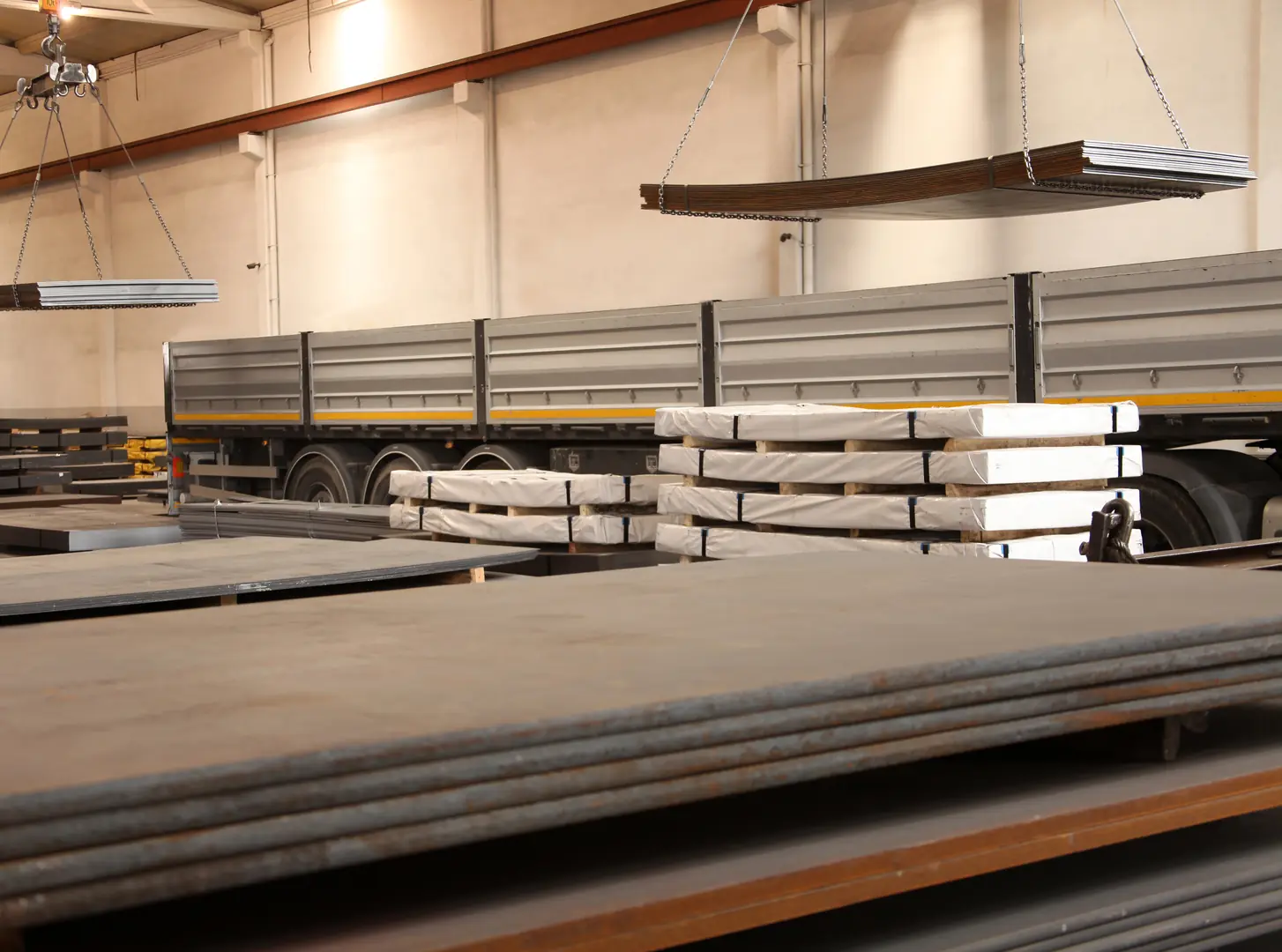
The concept of Total Cost of Ownership (TCO)[^2] is something we live and breathe at MFY, and it's perfectly applicable here. A drum of a generic solvent might look cheap on the invoice, but what is the true cost? You have to consider every factor from procurement to disposal. Rising cost pressures across the manufacturing sector mean we have to get smarter about these "hidden" expenses. It’s not just about saving a few dollars today; it’s about building a resilient and efficient operational model for the long term. This is a conversation I have with partners constantly—look beyond the sticker price and analyze the full financial picture.
Direct Costs: Purchase and Consumption
This is the most obvious cost. However, a more effective solvent might require a smaller volume to do the same job, potentially offsetting a higher per-liter price. Consumption rates are a critical variable. We encourage clients to run trials to measure exactly how much of each potential solvent is needed to achieve their cleaning standard.
Indirect Costs: Disposal and Compliance
This is where many businesses get caught off guard. Hazardous solvents come with stringent—and expensive—disposal regulations. The cost to have a certified service handle your chemical waste can be substantial. Furthermore, compliance with environmental and workplace safety regulations may require investments in monitoring equipment and reporting, adding to the TCO.
Hidden Costs: Downtime and Safety
What is the cost of an accident? Or the cost of equipment downtime because a solvent damaged a seal or component? These are real financial risks. Cheaper, more aggressive solvents often require more extensive Personal Protective Equipment (PPE)[^3], better ventilation systems, and more rigorous training. These safety-related expenses are a fundamental part of the TCO and should never be overlooked.
What are the safety considerations when using industrial solvents for stainless steel?
Solvents are powerful chemicals that can be hazardous. Ignoring safety protocols not only endangers your team but also exposes your business to severe legal and financial penalties.
Key safety considerations are flammability, toxicity (both inhalation and skin contact), required Personal Protective Equipment (PPE), adequate ventilation, and compliant storage and disposal. Every solvent's Safety Data Sheet (SDS) is the definitive guide and must be followed.

Safety is non-negotiable. At MFY, our commitment to quality extends to the well-being of everyone who handles our products and the equipment made from them. I once visited a facility in Southeast Asia where lax solvent handling was causing persistent health complaints among the staff. We worked with them to conduct a full audit, starting with the Safety Data Sheets for every chemical on site. By implementing proper ventilation, mandating correct PPE, and switching to a less toxic solvent, they not only resolved the health issues but also saw a boost in team morale and productivity. This experience reinforces a simple truth: a safe workplace is an efficient workplace. The increasing regulatory scrutiny on chemical use isn't a burden; it's a necessary step toward a more responsible and sustainable industry.
Understanding the Safety Data Sheet (SDS)
The SDS is your most important document. It provides critical information on handling, storage, first aid, and emergency procedures. Every single person who might come into contact with a solvent must be trained on how to read and understand the relevant SDS.
Personal Protective Equipment (PPE) Protocols
The SDS will specify the required PPE, which may include chemical-resistant gloves, safety goggles or face shields, and respirators. Ensuring your team has the right PPE—and is trained to use it correctly—is a fundamental pillar of chemical safety.
Ventilation and Storage Requirements
Many solvents release fumes that can be harmful if inhaled. Proper ventilation, including local exhaust systems, is crucial to maintain safe air quality. Additionally, flammable solvents must be stored in designated fire-resistant cabinets, away from ignition sources, to mitigate the risk of fire or explosion.
How can businesses optimize the use of solvents for cost-effective cleaning?
Simply buying a solvent isn't enough. Wasting it through inefficient processes drains your budget and increases your environmental footprint. The key is to use it with intelligence and precision.
Businesses can optimize solvent use by precisely matching the solvent to the contaminant, adopting correct application techniques, implementing recycling systems where feasible, and training staff on efficient protocols to eliminate waste and overuse.
 Stacks of high-quality stainless steel coils in a warehouse, ready for distribution by MFY China.](https://cnmfy.com/wp-content/uploads/2025/08/high-quality-stainless-steel-coils-2.webp)
Optimization is where operational excellence truly shines. It’s about creating a system that delivers a perfect clean with the minimum possible resources. This mindset is central to our philosophy at MFY, where we are constantly evolving to be more agile and resilient. The goal is to harmonize the competing priorities of cost, safety, and performance. You don't have to sacrifice one for the others. For example, investing in a better application method, like using pre-saturated wipes instead of open buckets and rags, can dramatically reduce solvent consumption and VOC emissions. It's a small change that delivers a big impact on both the budget and the environment.
Precision Cleaning: Matching Solvent to Soil
As we've discussed, using the right tool for the job is paramount. Conduct an audit of the different types of contaminants in your facility—oils, greases, inks, dust—and create a clear protocol that specifies which solvent to use for each job. This prevents the wasteful use of powerful, expensive solvents on simple cleaning tasks.
Investing in Application Technology
How the solvent is applied matters. Spray wands, automated cleaning systems, or even simple controlled-dispensing bottles can significantly reduce the amount of solvent used compared to manual dipping or pouring. For larger operations, solvent recovery and recycling systems can offer a substantial return on investment by purifying and reusing the solvent.
Training and Process Control
Your team is your first line of defense against waste. Regular training on not just safety, but also efficient application techniques, is crucial. Simple process controls, like standardizing the number of wipes used per machine or implementing checklists for cleaning procedures, can instill a culture of conservation and efficiency.
What are the expert recommendations for choosing safe and efficient solvents?
Making the final choice can feel like a major commitment. With so many variables, a poor decision can have lasting negative effects on your operations and your bottom line.
Experts recommend prioritizing biodegradable, low-VOC solvents, conducting a full risk assessment, testing compatibility with your specific grade of stainless steel, and collaborating with both your suppliers and equipment manufacturers for a holistic, future-proof solution.
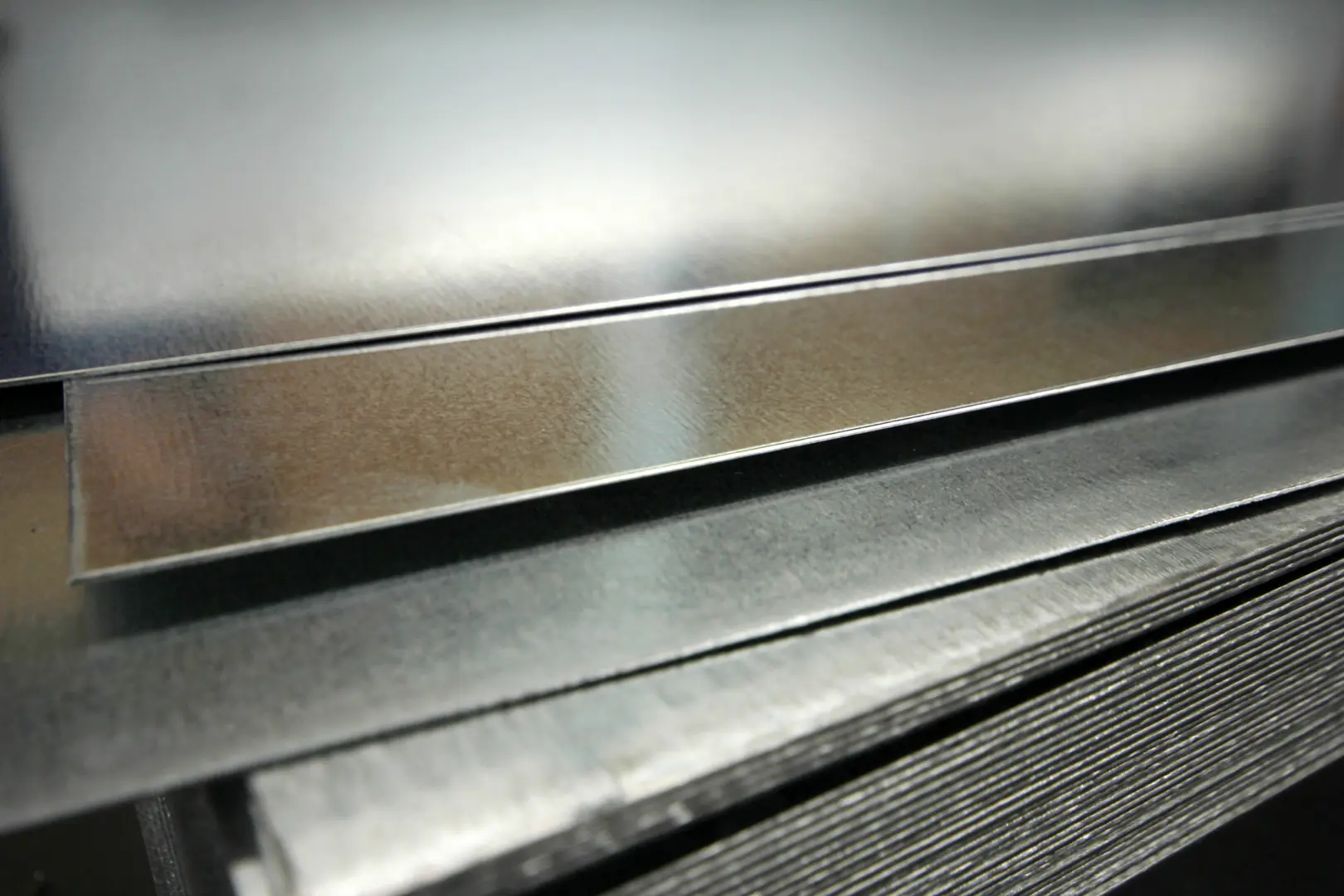
My final recommendation is to view this not as a one-time purchase, but as a strategic partnership. The future of manufacturing is green, safe, and efficient. The choices we make today about something as simple as a cleaning solvent will determine our readiness for that future. The clear trend is a move toward sustainable chemistry—solvents that are powerful yet biodegradable, effective yet non-toxic. Aligning your maintenance strategy with this trend isn't just good for the planet; it's good for business. It enhances your brand reputation, improves operational efficiency, and positions you as a leader.
The Shift to Sustainable Chemistry
When evaluating new solvents, make biodegradability and low toxicity a top priority. Look for products derived from renewable resources. These "green" solvents are increasingly able to match the performance of their traditional counterparts, but with a fraction of the environmental and safety impact. This is the direction the market is heading, and early adopters will have a competitive advantage.
The Importance of Pilot Testing
Never switch over your entire facility to a new solvent without testing it first. Select a small, non-critical area and run a pilot test. Evaluate its cleaning effectiveness, drying time, and any potential effects on the stainless steel surface. This small step can save you from a massive headache down the road.
Building a Partnership with Your Supplier
Your solvent provider should be more than just a vendor; they should be a partner. A good supplier, much like we strive to be at MFY for our steel partners, will work with you to understand your specific needs, provide technical support, and help you navigate the complex world of safety and environmental regulations. Lean on their expertise to make the most informed decision possible.
Conclusion
Selecting the right industrial solvent is a critical strategic decision, not just a maintenance task. By carefully balancing cleaning efficacy, total cost, and uncompromising safety, you protect your equipment, your people, and your profitability. This forward-thinking approach is essential for sustainable and responsible industrial leadership.
Have Questions or Need More Information?
Get in touch with us for personalized assistance and expert advice.
